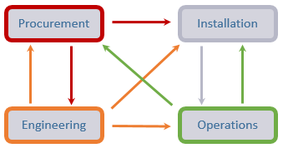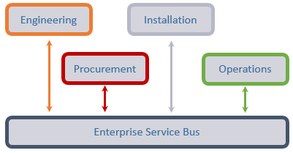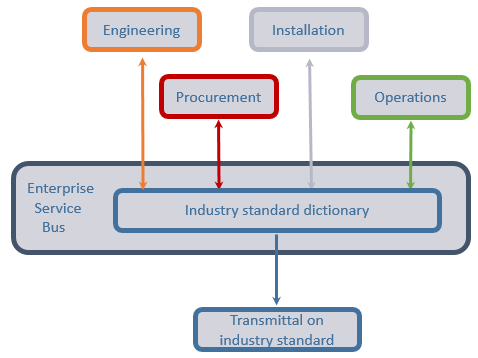In my view you may have the perfect platform for managing engineering information across engineering disciplines, but it still isn’t worth much if the information flow to and from project execution, procurement and supply chain is severely hampered.
Essentially there are 3 main strategies for integration
|
|
|
The Enterprise Service Bus has a nice Graphical User Interface for creating integrations where you simply drag and drop attributes from one systems adaptor and maps it to attributes from another systems adaptor…
Consequence: Point to point issues are re-created in the Enterprise Service Bus, even if the exchange format is completely neutral.
A clear integration strategy could also yield considerable business benefits even outside solving internal integration issues. What would happen if a dictionary approach was selected, and the dictionary was an industry standard?
Well, then information could be supplied to other companies, like operators, customers or suppliers on that industry standard format without having to develop special integrations for interoperability with other companies in the value chain.
Some points to ponder
Bjorn Fidjeland




 RSS Feed
RSS Feed
